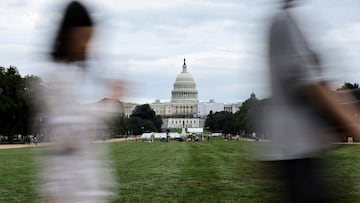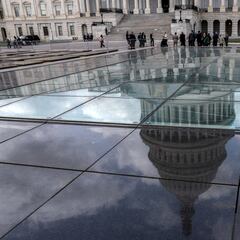How many government shutdowns have been there in the US history?
The US is careening toward a government shutdown. It wouldn’t be the first time that paralysis on funding the government has caused a federal work stoppage.

More likely than not the United States government will shut down on Sunday 1 October as House Republicans defy Speaker Kevin McCarthy’s attempts to fund the government. The leader of the GOP in the lower chamber was caught off guard on Thursday when members of his party failed to move forward on a procedural vote that would’ve led to voting on an appropriations bill for the Department of Defense.
That was the second time in one week, something that is normally unheard of, and it is just one of twelve that need to pass. Without approving or extending funding for government operations, work at agencies will come to a grinding halt, furloughing and stopping pay for hundreds of thousands of government employees and disrupting programs.
The frequency of government shutdowns has reduced since the 1980s but they have become longer and more damaging. The fact that the US government can even have a shutdown all comes down to a quirk in the way the US is governed that no other country has to deal with.
The House failed to pass a procedural rules vote today, @emrwilkins
— CNBC (@CNBC) September 21, 2023
reports. "This is a whole new concept of individuals that just want to burn the whole place down," House Speaker Kevin McCarthy said. "That doesn’t work." https://t.co/1xf6Y33riV pic.twitter.com/kK31lrHOyr
How many times has a shutdown happened before?
There have been a 20 “funding gaps,” when funds were not appropriated to the federal government for a few hours or even days, since 1976. The six times prior to 1980 did not result in any work stoppage by the federal government. Ten of the funding gaps had little effect on the operations of the federal government, lasting just a few days or less and occuring during weekends.
Four “real” shutdowns, however, have been bruisers. Not just financially but also for the party seen as being responsible for causing the shutdown. The two government shutdowns in 1995, the second lasted 21 days, were credited with helping then-President Bill Clinton win re-election in 1996 with blame falling on the Republicans which controlled both chambers of Congress.
The most costly in history was the shutdown over the holidays of 2018 to 2019 which lasted for 35 days, costing an estimated $11 billion. This was due to President Trump wanting to grant extra funding for his border wall, but the Senate was determined to stop it from happening. Again, polls found that Americans placed the fault with Republicans.
Why do government shutdowns exist?
Shutdowns happen because Congress is the only body responsible for the allocation of government funding. This means if Congress cannot pass a budget, the president does not have the power to unilaterally decide on funding.
There is a backdoor, called the continuing resolution, which can temporarily fund the government. However, Republican hardliners in the House say that they will not support such a move.
Rep. Dan Bishop of North Carolina, who was one of the Republicans who helped kibosh the vote on Thursday, called the reliance on the use of continuing resolutions over the years “the Washington wash cycle.” Lawmakers pass temporary funding to get to the end of the year and then scramble at the last minute to “pass a monstrous omnibus” to meet all of the government’s funding needs for the fiscal year.
Senate Majority Leader Chuck Schumer told CNN that his chamber might have to take matters in its own hands and push through a must-pass bill to fund the government amid deep divisions in the House and a looming shutdown https://t.co/zxsPA2HfsK
— CNN Politics (@CNNPolitics) September 22, 2023
Do other countries experience government shutdowns?
Short answer, no.
Related stories
Longer answer, the American political system means the president can be in power without having his or her party controlling Senate or the House. This makes passing legislation, including budgets, much more difficult, requiring negotiation and compromise on both sides.
In other presidential systems around the world, the president has the authority to keep governments functioning without a budget. In parliamentary systems, prime ministers normally resign if they no longer control the majority in parliament, leading to more elections.

